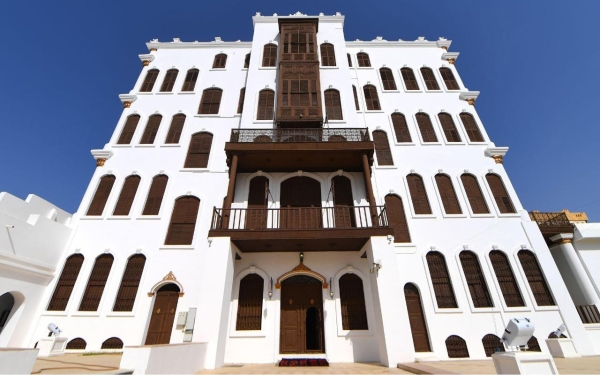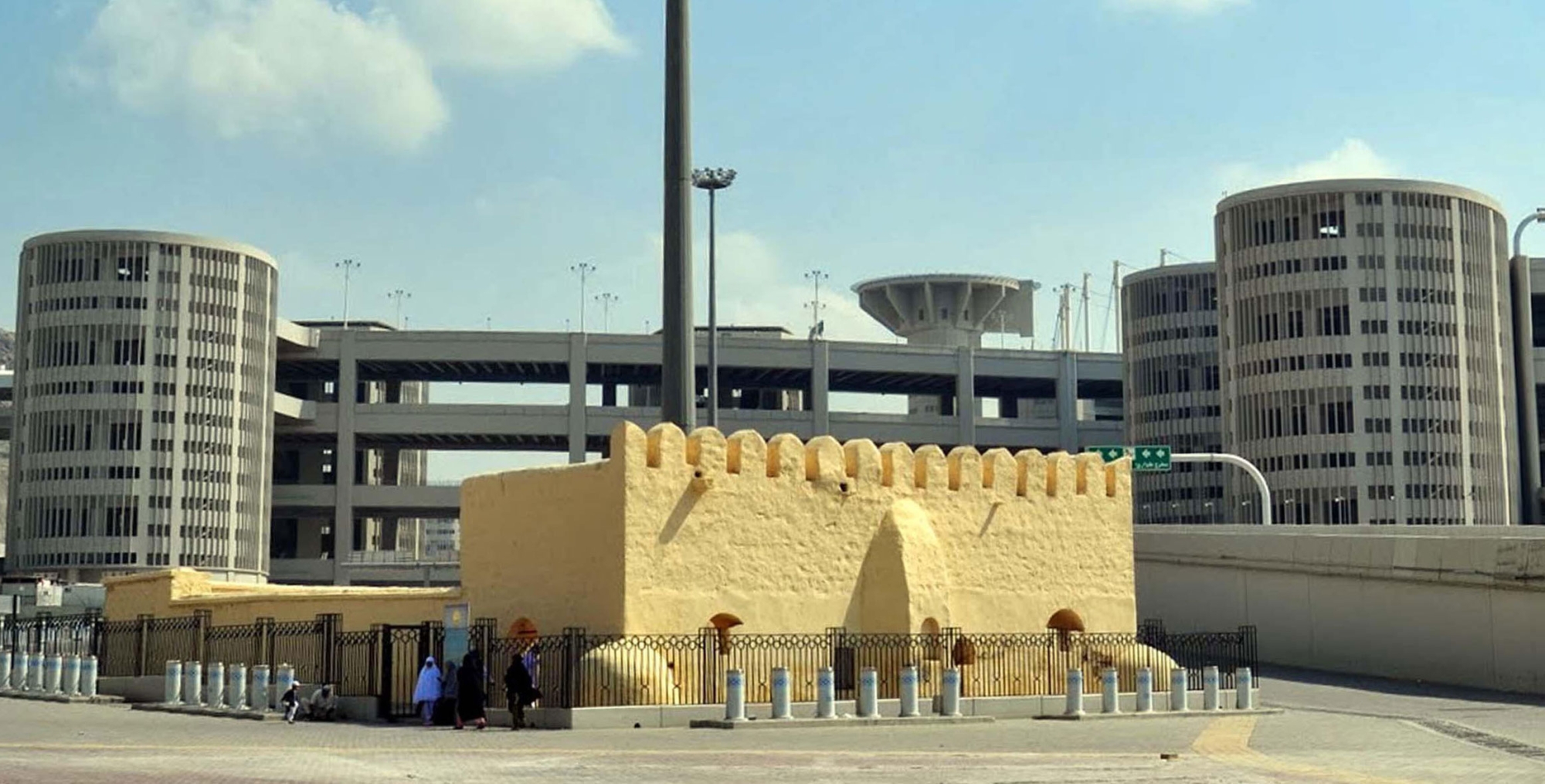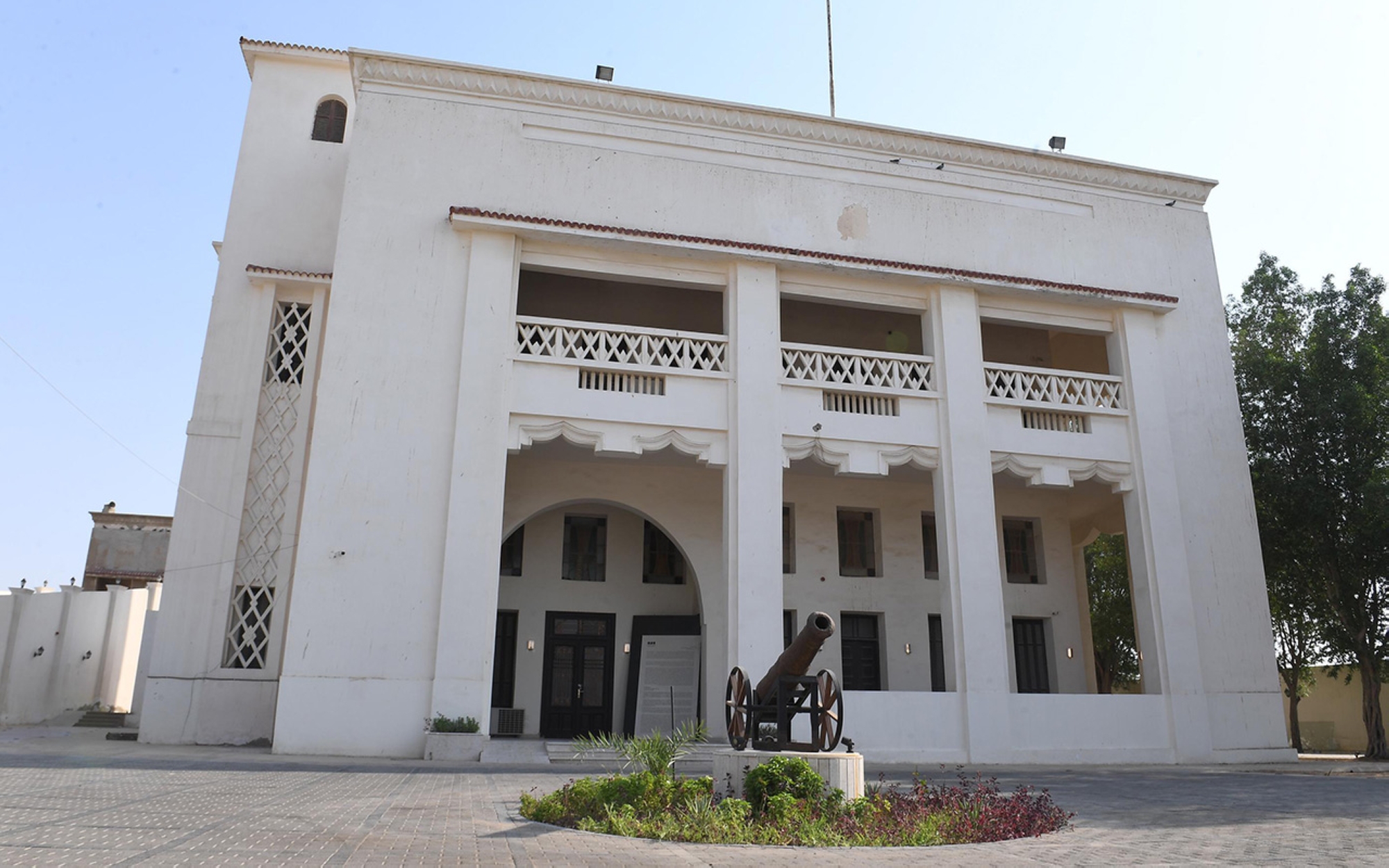

The Artifacts in Makkah al-Mukarramah Province are the material remnants and legacies of ancient human civilizations in Makkah al-Mukarramah Province, located west of the Kingdom of Saudi Arabia.
The artifacts in Makkah al-Mukarramah Province during prehistoric times
The geographical location and geological formation have contributed to creating a suitable environment for human settlement in Makkah al-Mukarramah Province for a long time. Field research teams have discovered dozens of sites dating back to the Acheulean period, the second period of the Old Stone Age, in Wadi Fatimah area and along the Red Sea coast in Makkah al-Mukarramah Province. These sites are estimated to be around two hundred thousand years old and include thousands of stone tools, as well as a collection of Mousterian tools, which chronologically followed the Acheulean civilization. These tools are made from raw stone materials such as basalt, volcanic rocks, rhyolite, and quartzite, found in Wadi Fatimah and near al-Jumum and Harrat Shama.
Field surveys revealed the presence of Acheulean stone tools on elevated terraces along the Red Sea coast in Makkah al-Mukarramah Province, and stone axes from Mount Arfa in Taif, dating back to approximately 230,000 years ago. Numerous rock art sites were discovered in the Jabal al-Qasab area in Burayman, and al-Jabalain and Obhur areas, including pictorial panels depicting various animals such as cattle, camels, and ostriches, as well as drawings of humans, some of whom are holding shields, spears, and daggers.
The artifacts in Makkah al-Mukarramah Province during pre-Islamic times
Research confirmed the existence of artifacts dating back to the pre-Islamic period, including pottery, ceramics, flint tools, and grinding stones in al-Arfa in Taif, the site of the Souk Dhi al-Majaz northeast of Arafat, and al-Sarin. Remains of mines for extracting metals were found in some mountains in Tihama and Sarat, as well as various forms of ancient Arabic inscriptions known as "Thamudic script" in Taif, Wadi Buwayb, and Burayman in Jeddah, and Wadi al-Usaylah in Makkah al-Mukarramah. These include inscriptions and drawings in Wadi Malkan, the site of al-Duwayrij in Yalamlam, and Wadi al-Kafu. Additionally, there are several inscriptions written in the South Arabian script along the Tihama and coastal roads and the Sarat road coming from Yemen, mostly featuring the names of individuals who lived during that period.
Rock art depicting humans, animals, shapes, symbols, and marks from the pre-Islamic period is widespread across several sites in Makkah al-Mukarramah Province. Examples include the rock art at Jabal Sulaitynah, al-Arfa, al-Ruddaf, Umm al-Siba’, and Ghadeer al-Banat in Taif Governorate; at Jabal Umm Radam in al-Lith Governorate; and in the city of Makkah al-Mukarramah at ad-Duwaydah, Jabal al-Qusayr, Wadi al-Kafu in al-Yamaniyah, Wadi al-Usaylah, Wadi Buwayb, and Burayman.
The artifacts in Makkah al-Mukarramah Province along the migration, trade, and pilgrimage routes
Makkah al-Mukarramah Province is located along ancient trade routes and pilgrimage caravans, whose artifacts remain to this day, including the Tihama and Sarat routes. There are numerous ancient archaeological sites related to this period, such as Ghar Thawr, a prominent landmark at the top of Jabal Thawr, one of the northern mountains of Makkah al-Mukarramah City. The Prophet Muhammad, peace be upon him (PBUH), and his companion Abu Bakr al-Siddiq (may Allah be pleased with him) stayed there during their migration journey until the Quraysh's search for them subsided, after which they continued their journey. Additionally, there are the artifacts of Darb Zubayda, an old pilgrimage route connecting Kufa to Makkah al-Mukarramah, which includes fifty-four stations whose remnants are still visible today. Notable landmarks include the square-shaped al-Aqiq Pond on the western bank of Sahl Rukbah, and nearby, the remains of al-Ghumrah Station, one of the major stations on the old pilgrimage route. Other significant features include al-Kharabah, comprising a main circular stepped cistern, a rectangular filter basin, and an upper pond at Wadi al-Shamiyah, a large pilgrimage station, and Ain Zubayda, whose water flowed for centuries, originating from the top of a mountain between Taif and Arafat, supplemented by a series of feeding springs. Furthermore, there are artifacts of the pilgrimage route between al-Madinah al-Munawwarah and Makkah al-Mukarramah, including the artifacts of al-Jumum and its pond, which has a diameter of approximately one hundred m.

Islamic inscriptions and engravings in Makkah al-Mukarramah Province
Makkah al-Mukarramah Province is one of the richest areas in the Kingdom with Islamic inscriptions and writings, dating back to the early seventh century and subsequent centuries. These include:
Inscriptions of the Grand Mosque: The Grand Mosque is rich with Islamic writings that document various constructions, renovations, restorations, and expansions through foundational or renewal texts. These inscriptions pertain to the Grand Mosque itself, al-Kaaba al-Musharrafa, Maqam Ibrahim or Hijr Ismail, the Zamzam well, and the four maqamat. They span a period of over ten centuries, beginning from the eighth century. These inscriptions were executed on marble columns, stone, wood, and metal plates. Some of them remain in the historical structure of the Grand Mosque, while others have been collected in a dedicated museum, the Two Holy Mosques Museum. Numerous Quranic verses inscribed on the plates remain intact in the Grand Mosque. The oldest of these existing inscriptions are four prominent Kufic script engravings on marble columns on the southern side of the mosque's courtyard, dating to the works completed in the Grand Mosque during the reign of Abbasid Caliph al-Mahdi (775-786) and the decree of Sultan Shaban Bin Hussein Bin al-Nasir Mohammed Bin Qalawun, dated 1364.
Among the inscriptions in the Two Holy Mosques Museum are the inscription of Dar al-Salami and al-Hamdani dated 1217, the inscription of the construction of Bab al-Hazurah dated 1399, and the inscription of the renovation of the Maqam of Prophet Ibrahim dated 1454.
There are also inscriptions from the holy sites and mosques of Makkah al-Mukarramah that date a large number of Islamic buildings. These include the inscription of the Bay'ah Mosque in Mina dated 762, another undated inscription inside the mosque, the inscription of the camp of Caliph al-Mutawakkil ala Allah dated 859, the inscription of Aisha Mosque (al-Taneem) dated 922, the inscription of Ribat the mother of Caliph al-Muqtadi Bi Amr Allah dated 1115, and two inscriptions for the construction by the Banu Arafah, one dated 1187-1188 and the other dated 1198. Additionally, there are two inscriptions in the oldest Ijabah Mosque, one dated 1492 and the other dated 1712.
The Abdullah Bin Abbas Library in Taif holds an inscription dating back to 1153. This memorial text, consisting of fifteen lines, was executed on a basalt slab in the Hejazi script and commemorates the death of a person named Muslim Bin Umar al-Thaqafi.
A Quranic text dated 717 was found in al-Usaylah Center, and the inscription of the Saysad Dam in Taif dates back to 678. Additionally, an inscription in the Hejazi script dated 660 was discovered in Wadi al-Shamiyah, and the inscription on Jabal al-Jalil in Wadi Mu'aysam is dated 699.
Ancient coins in Makkah al-Mukarramah Province
Discoveries and research have shown that Makkah al-Mukarramah was one of the mints during the Abbasid Caliphate. A collection of minted coins has been found, including a dinar from Makkah al-Mukarramah dated 864 during the reign of Caliph al-Mu'tazz Billah, and a dinar minted in Makkah al-Mukarramah in 873 during the reign of Caliph al-Mu'tamid ala Allah.
The Currency Museum at the Saudi Central Bank holds a number of coins minted in Makkah al-Mukarramah, including an Abbasid dirham minted in 906 during the reign of Caliph al-Muktafi and a fragment of an Ayyubid dirham bearing the name of King al-Mas'ud.
Islamic architecture and arts in Makkah al-Mukarramah Province
The inhabitants of the Makkah al-Mukarramah Province excelled in the art of architecture, constructing dams, rainwater channels, castles, and forts since pre-Islamic times.
The houses of the Quraysh were circular in shape until the second half of the sixth century when Hamid Bin Zuhayr built a square house. During the pre-Islamic era and the early days of Islam, the people of Makkah al-Mukarramah used shelves in their homes for storing belongings. The people of Taif were skilled in various types of construction, including the wall of Taif, as well as the Samlaqi Dam and the Saysad Dam, both of which still exist today.
Bricks were used as a primary building material in Makkah al-Mukarramah, alongside stone, including the black-and-white speckled Shibika stone used in the construction of the Kaaba. Basalt was employed in the southern areas of Makkah al-Mukarramah, while both mud bricks and basalt were used in Makkah al-Mukarramah and Taif. Limestone was utilized in Jeddah, and the art of gypsum plastering can be observed in the Bay'ah Mosque in Mina, Shubra Palace, and the historic Thalaba Dam on Wadi Jabajib.
Jeddah Governorate is a historic city known since pre-Islamic times. It was established as a port by the companion Uthman Ibn Affan. The city was surrounded by a wall with five gates. The historic area of Jeddah is one of the prominent architectural landmarks in the Kingdom, resembling a single neighborhood crisscrossed by alleys and streets. The houses were designed in an architectural style that considered social traditions and climatic conditions. They are distinguished by traditional bay windows and decorated wooden Rawasheen. Some of the houses still standing today include Nassif House, Noor Wali House, and Baashen House.

Architectural works during the reign of King Abdulaziz
Makkah al-Mukarramah Province features numerous architectural works executed under the direction of the Founding King Abdulaziz Bin Abdulrahman Al Saud. Among these are his orders to renovate Ain Zubaydah in 1925, to construct three public drinking fountains along the road between Makkah al-Mukarramah and Jeddah in 1942, and the Ma’abda Fountain in 1943. Additionally, he commissioned five wells, a reservoir, and a water basin in Ashirah at the head of Wadi al-Aqiq in 1931. Other notable projects include the Royal Palace in Ma’abda, Khuzam Palace in Jeddah, and al-Zaher Palace in Makkah al-Mukarramah.
Historical monuments in Makkah al-Mukarramah Province
Makkah al-Mukarramah Province, in addition to the Grand Mosque and the holy sites, includes a number of archaeological sites whose landmarks remain to this day. These, in addition to what has been previously mentioned, include:
Cave of Hira: Located at the summit of Jabal al-Nour northeast of Makkah al-Mukarramah, about five km from the Grand Mosque, at an elevation of 634 m. It witnessed the beginning of the Islamic call with the revelation to the Prophet Muhammad (PBUH), where the first verse of the Quran, "Read in the name of your Lord who created," was revealed.
Umm al-Damiran Site: Located north of Makkah al-Mukarramah, it is one of the stations on the Darb Zubayda. The site includes two ponds, underground channels, a group of buildings, and the foundations of two forts.
Al-Burud Site: It is one of the major archaeological sites on the Darb Zubayda, comprising more than thirty architectural units. These include the remnants of the foundations of palaces, houses, ponds, and wells.
Jabal al-Radiha: Located north of Jeddah, its rock faces feature clear depictions of human and animal figures, some of which reach heights of up to six m.
Thalaba Dam: Located near Taif, it was constructed using square stones on two parallel walls.
Al-Lasb Dam: East of the highway, situated within a valley one hundred m wide. It was built amidst a rocky outcrop in a narrow channel five m wide. Nearby, there are abandoned houses and pottery fragments dating back to the Islamic era.
Al-Sereen Port: An ancient port located about fifty km from al-Lith, it is a significant archaeological site. Most of its features have been buried by sand. However, remnants of glass and pottery industries from the ninth century and funerary inscriptions can still be found on the surface.
Souk Okaz: One of the largest pre-Islamic Arab markets, it is located northeast of Taif. It contains the ruins of buildings and palaces dating back to the eighth century and remained active until the Islamic era up to 747.
Al-Fajah Pond in Wadi Ulf in al-Jumum: It is one of the stations on the Levant Hajj route, featuring a circular pond with a diameter of approximately one hundred m.
Shubra Palace in Taif: Built in 1907, it is a historic palace known for its distinctive architectural design.
Nassif House in Jeddah: This palace was built in 1872 by Omar Effendi Naseef. It consists of four floors and features a facade adorned with decorative woodwork. It is considered a prime example of the architectural style in Jeddah during that period.
Masouda Site: Located northeast of Asham, spanning an area of ninety thousand m, it contains clear architectural elements on the surface. Several stone stelae with inscriptions in Kufic script dating back to the seventh and eighth centuries have been discovered at the site, along with numerous stone mills.
Wadi Fatimah: Numerous artifacts have been recorded in this valley, including hand axes, cleavers, and pickaxes.
Yalamlam (al-Sa'diyah): Located south of Makkah al-Mukarramah, it served as the miqat for the people of Yemen on the coastal Hajj route. The area includes water facilities such as the Sa'diyah Well, as well as caves, rocks, and Islamic inscriptions and engravings.
Related quizzes
Related articles
